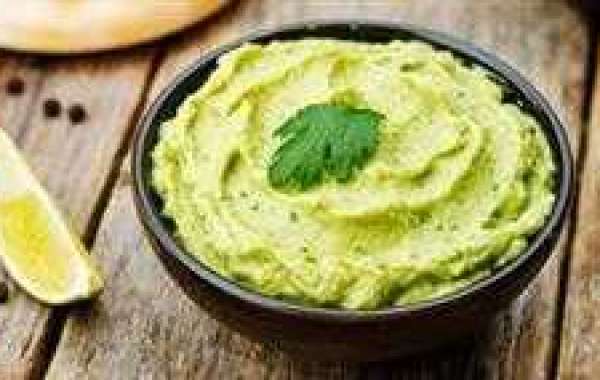Hummus is a dip with Middle Eastern origins, and the word is actually a direct translation for chickpea.1 It is traditionally made by grinding together chickpeas, olive oil, garlic, tahini (sesame seed paste), lemon juice and salt.2
While tasty, the main issue with eating hummus is that it uses beans. As you know, beans contain lectins, which are sugar-binding plant proteins that attach to your cell membranes. Recent research has shown that lectins are linked to inflammatory or autoimmune conditions, making them a threat to your health.
If you like hummus but would like to circumvent its lectin-related issues, try replacing the chickpeas with other ingredients, which this recipe from Paleohacks succeeds in doing. By using zucchinis and avocados in place of chickpeas, you’re enriching the hummus with a healthy dose of beneficial fats, plus other nutrients, that your body needs. It’s very easy to prepare as well.
Creamy and Bean-Free Avocado Hummus
Ingredients
- 2 medium zucchinis, peeled and deseeded
- 1 to 2 large, ripe avocados
- 2 tablespoons olive oil
- 1 teaspoon lemon juice
- 1/2 cup homemade tahini
- 1/2 teaspoon cumin
- 1 teaspoon minced garlic
- Sea salt, to taste
- Paprika and dried cilantro for serving (optional)
Procedure
- Slice off the ends of both zucchinis, peel and deseed them, then place in a food processor along with the avocado, olive oil, lemon juice, tahini, cumin, garlic and salt.
- Process on high until smooth, scraping down the sides as necessary.
- Transfer to a bowl, sprinkle with paprika and dried cilantro on top (optional) and serve.
- Use two avocados instead of one to thicken up the texture.
- Try this avocado hummus as a marinade! Slather it on chicken, pork or beef to add depth and flavor.
- Store leftovers in an airtight container in the refrigerator for up to one week.
Avocado Provides Healthy Fats for Optimal Health
In order to make hummus healthier, this recipe uses avocado, which is rich in various nutrients that will certainly grab your attention. In particular, avocado is rich in healthy fats, which is a far more ideal source of energy compared to sugar. In addition, these very same fats can help increase the absorption of fat-soluble nutrients from other foods you eat. A 100-gram serving also contains the following nutrients that can help you meet your daily recommended intake:
Vitamin K: 26 percent | Folate: 20 percent |
Vitamin C: 17 percent | Potassium: 14 percent |
Vitamin B5 (Pantothenic acid): 14 percent | Vitamin B6: 13 percent |
Vitamin E: 10 percent | Niacin: 9 percent |
Zucchini Provides Additional Texture for the Hummus
While avocado gives this hummus a smooth and velvety mouthfeel, using it alone won’t give the recipe a hummus-like texture. To help thicken the dish and give it a deeper flavor, zucchini is added. There are many things to love about zucchini. For one, it is a low-calorie food, which means that it can help prevent you from overeating and gaining excess weight. It also contains dietary fiber that may help boost your digestive health.
Furthermore, zucchini has a diverse antioxidant profile, which includes zeaxanthin, carotenes and lutein. Notable minerals include potassium, which can help moderate blood pressure levels and counter the effects of too much sodium in other foods you eat, and manganese, which may help promote proper calcium absorption and keep blood sugar levels balanced, as well as producing proteins responsible for blood clotting.3
Retaining the Tahini Helps Keep the Hummus Flavor
Tahini, which is essentially a paste made by grinding olive oil and crushed sesame seeds together, is a core ingredient of hummus.4 It’s easy to make at home, too, allowing you to avoid pesticides and other toxic chemicals that may come from commercially manufactured tahini. When making tahini, I suggest using unhulled sesame seeds because most of the nutrients are found on the skin. Consuming tahini may offer you the following benefits:5
- Various minerals, such as phosphorus, lecithin, magnesium, potassium, calcium and iron
- Contains methionine, an amino acid that may help in detoxifying your liver
- Contains protein, which is helpful for your body’s essential biological functions
- May help manage inflammation, thanks to its copper content
Try This Recipe to Help Increase Your Intake of Healthy Fats
If you regularly eat hummus, I recommend you switch to this recipe. Not only does it taste great, it also contains healthy fats that are more preferable as fuel compared to sugar. In addition, removing chickpea can help reduce the amount of lectins you consume. But before you proceed with this recipe, make sure that all your ingredients are organic and come from reputable producers. This ensures that what you’re eating is not just delicious, but safe for your health as well.














